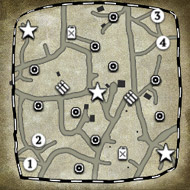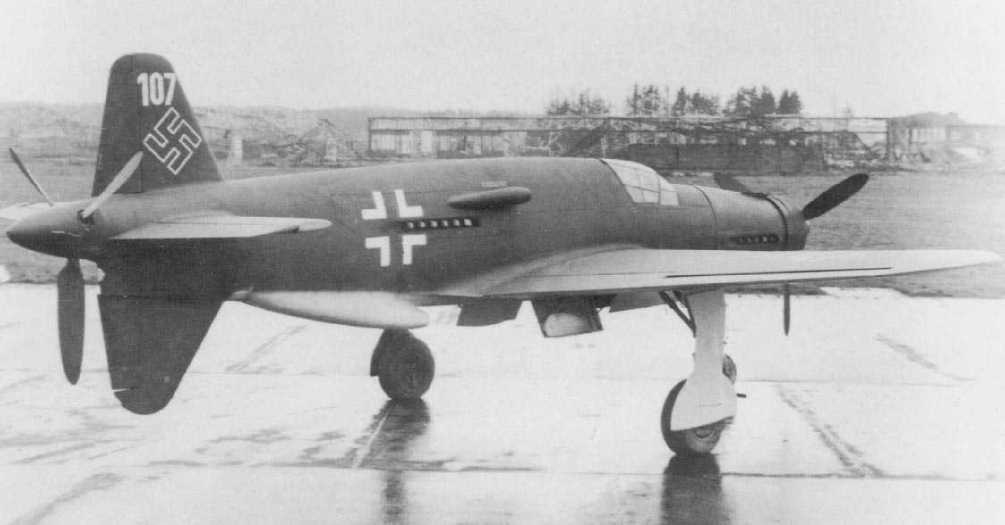
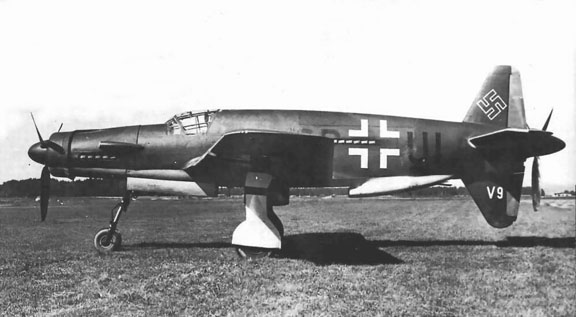
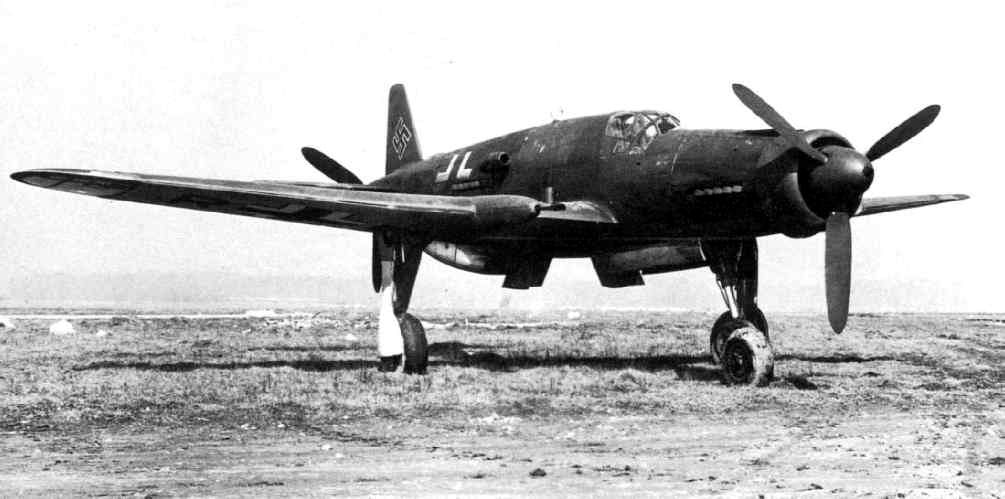
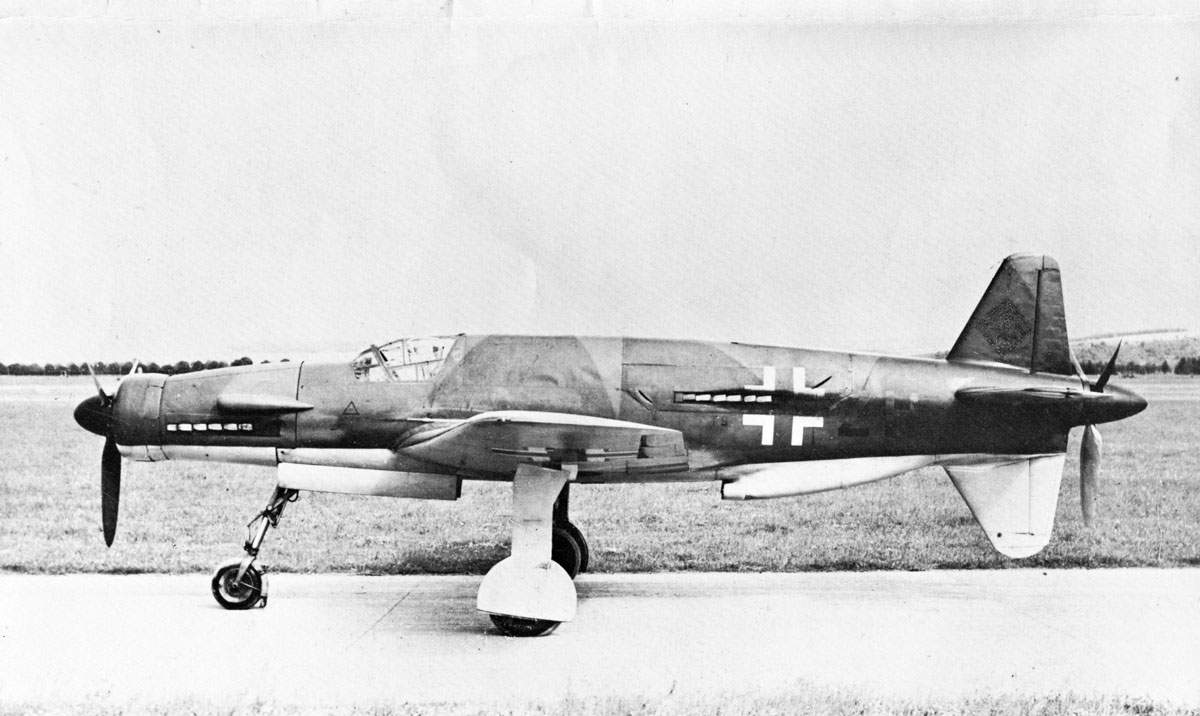
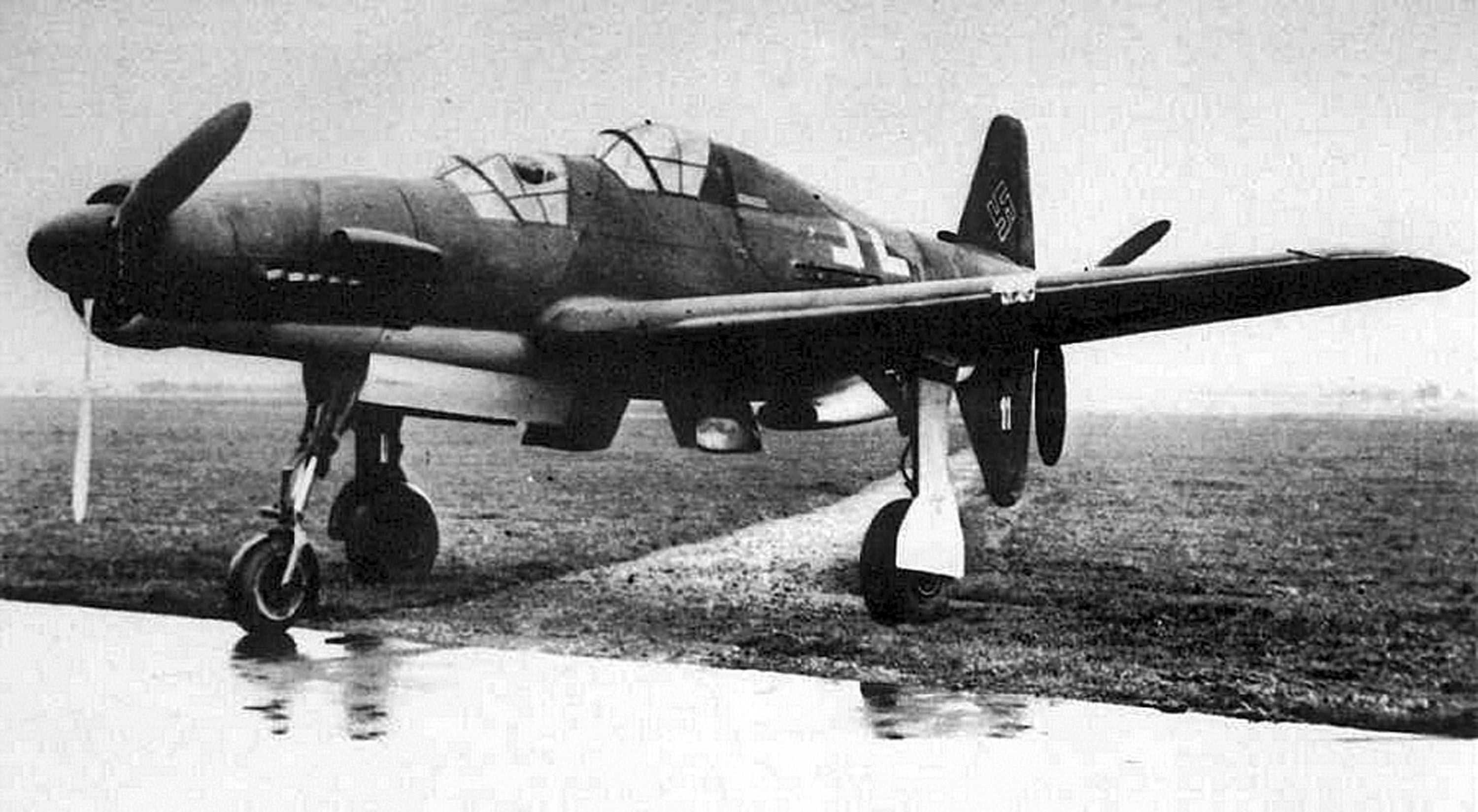
The Dornier Do 335 Pfeil ("Arrow") was a World War II heavy fighter built by the Dornier company. The two-seater trainer version was also called Ameisenbär ("anteater"). The Pfeil's performance was much better than other twin-engine designs due to its unique "push-pull" layout and the much lower aerodynamic drag of the in-line alignment of the two engines. The powerplants in play were 2 x Daimler-Benz DB603 liquid-cooled 12-cylinder inverted in-line engines. Standard armament was 1 x 30mm MG 103 cannon and 2 x 15mm MG 151 cannons and an optional external load of cannon pods, bombs or drop tanks could be fitted as needed.
During its trial run the Do 335 recorded speeds upwards of 470 miles per hour (763 km/h) with both engines running and a respectable 350 miles per hour when powered by only one. Its rate-of-climb was approximately 1,750 feet per minute. Because of its two-engine arrangement, the exit process for the pilot was complicated by the rear-mounted engine. For ejecting from the Do 335 aircraft, the process was reworked to jettison both the tail fin and rear propeller via controlled explosives within the rear of the fuselage.
The initial Do 335 was prototyped in no fewer than fourteen examples before late 1943 and ten preproduction Do 335A-0 aircraft followed in 1944. The D0 335A-1 marked eleven production-quality aircraft that followed but never fielded due to the end of the war in Europe during May of 1945.


 United States
United States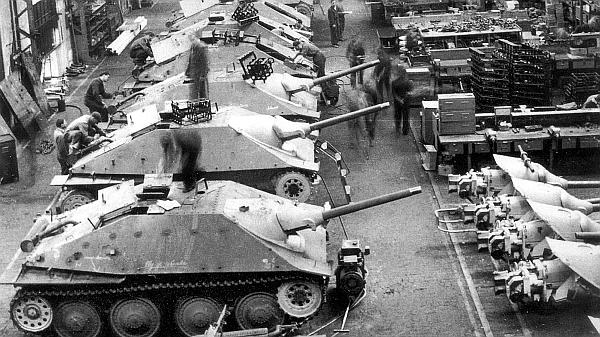
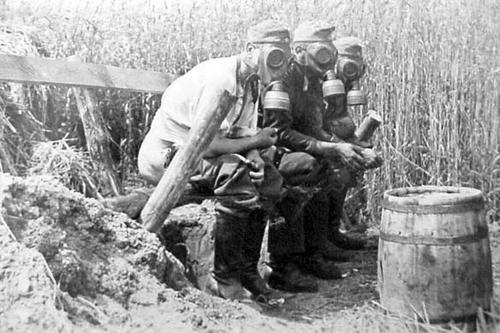
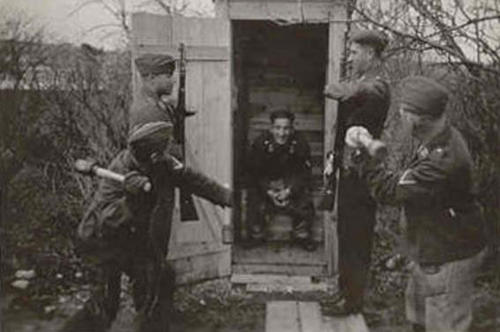
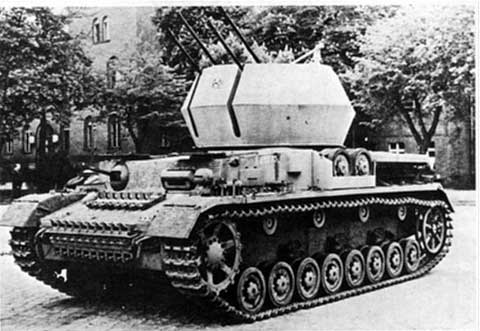
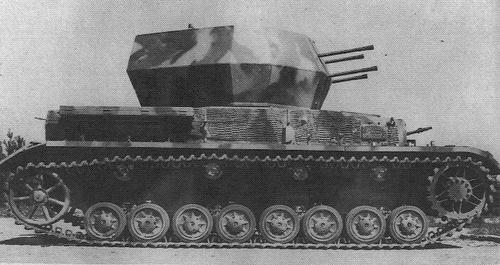
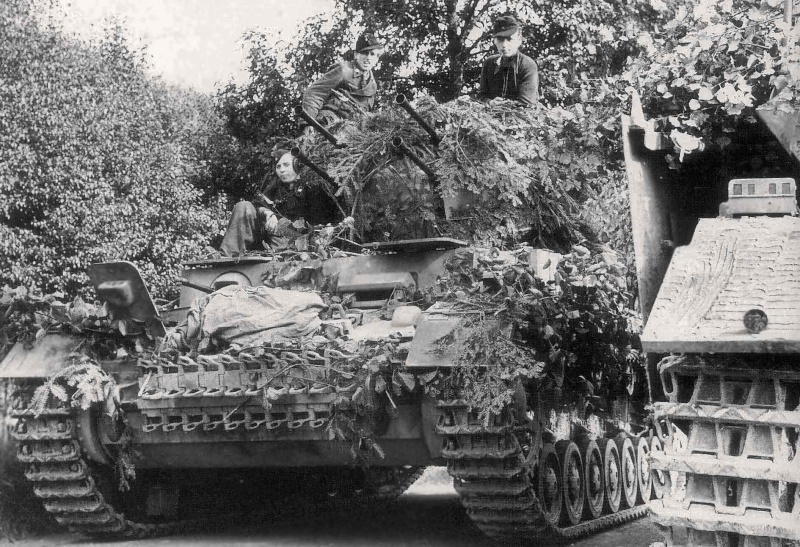
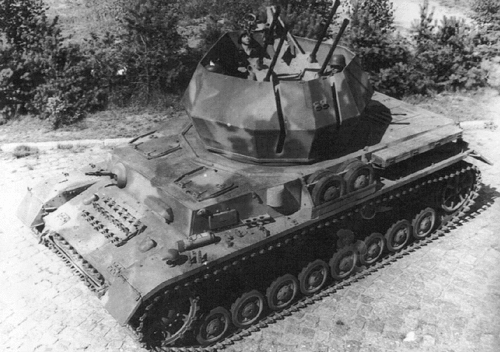
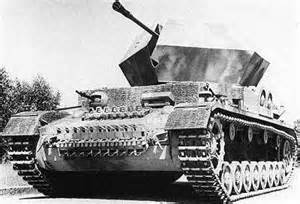
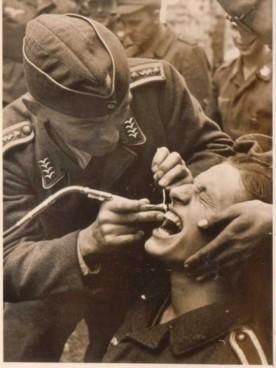
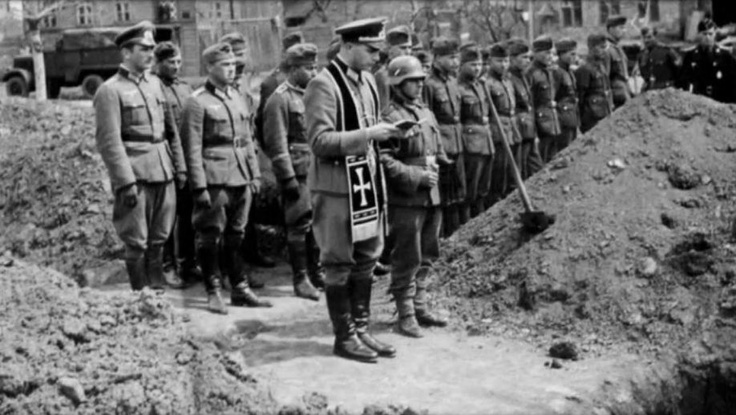
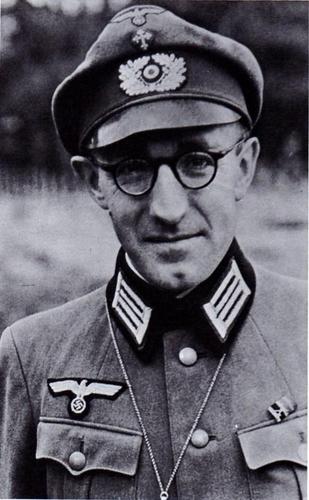
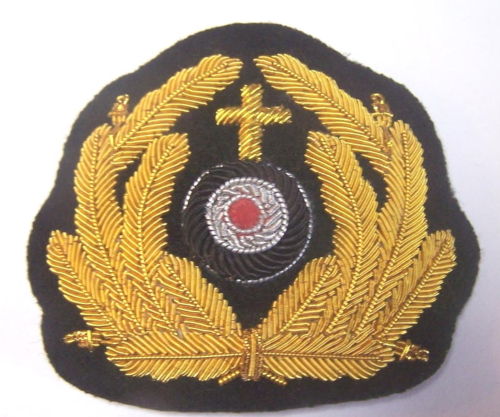
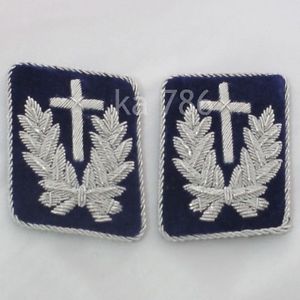
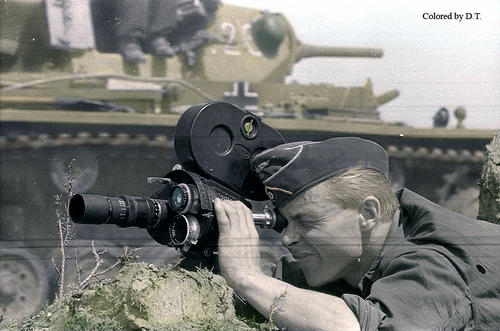
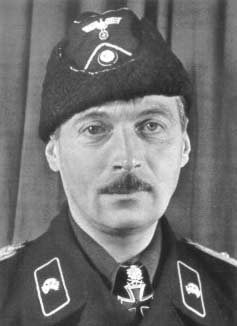
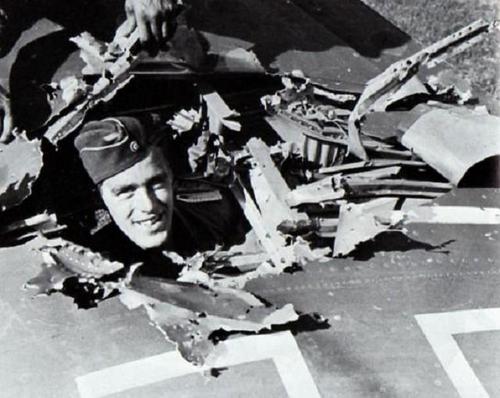
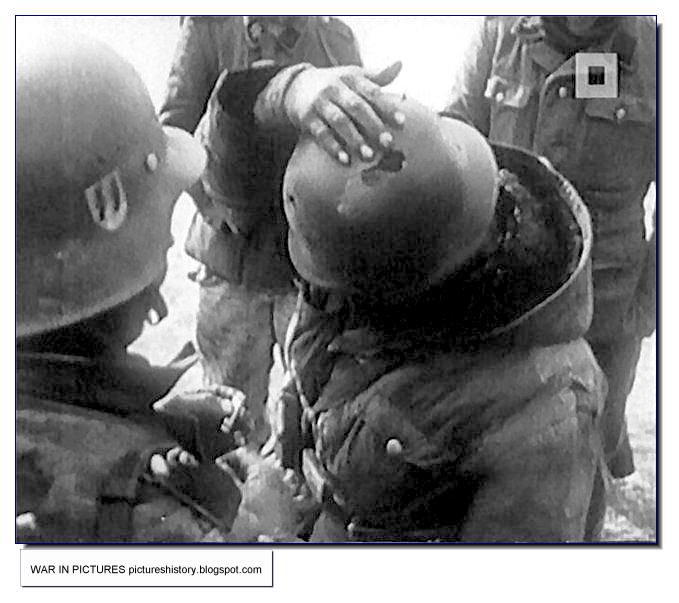







 cblanco ★
cblanco ★  보드카 중대
보드카 중대  VonManteuffel
VonManteuffel  Heartless Jäger
Heartless Jäger 